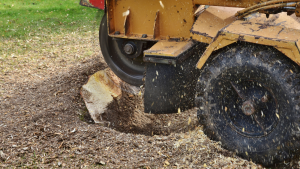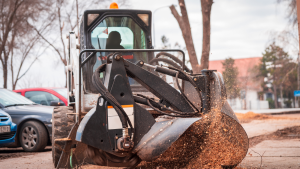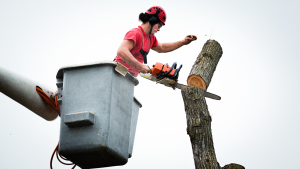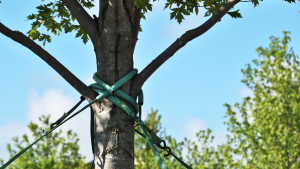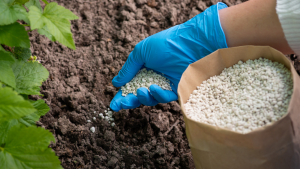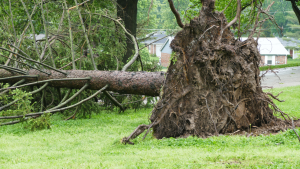The majority of bark beetle species are tiny insects that, in terms of size and appearance, resemble coffee beans somewhat. Their maximum length is only around 5 millimeters. Their bodies are cylindrical and typically black, brown, or dark red in appearance. They can chew through bark and phloem (inner bark) where they lay their eggs thanks to their powerful mandibles. After the larvae hatch, they eat the nearby phloem and create wood-boring galleries.
Although it is uncommon for the majority of species of bark beetles to totally destroy a tree on their own, this can harm and kill the branches and cause the tree to deteriorate. A further risk posed by bark beetles is that some species, such as the elm bark beetle, have been known to spread harmful fungus to trees, leading to diseases like Dutch elm disease.
The inner bark of the damaged trees protects the bark beetles from insecticides, making it challenging to treat the trees. The best thing you can do to avoid bark beetle infestations is to safeguard your trees. With efficient tree maintenance and preventative treatments, Joliet Tree Service can assist in defending your trees from destructive pests like bark beetles.
In addition to using insecticides that can be sprayed on or injected into trees to treat afflicted trees, our tree maintenance services also include fertilizer applications to help make your trees robust and resistant. Call our experts as soon as you suspect bark beetles are a problem for your trees so they can investigate and recommend the best course of action.
Signs of Bark Beetle Infestation
The outer and inner bark of a tree’s trunk, branches, or twigs are all vulnerable to assault by bark beetles. Due to the activity of bark beetles, the outer bark in the afflicted places may become loose, and when the bark is peeled away, the exit holes and galleries are visible. All of the following symptoms point to a bark beetle infestation:
Sap
Damaged trees will naturally produce pitch, or sap, to fight off bark beetles. On the tree’s bark, the sap will show up as reddish-brown or white lumps. The tree will appear white if it was successful in fending off the bark bugs. The sap will still be reddish-brown if the beetles succeeded in penetrating the tree.
Frass
Bark beetles consume the bark, leaving behind frass, which resembles sawdust. It is reddish-brown in color and may be seen on the ground around the tree as well as in the cracks in the bark.
Bark Peeling
Often, woodpeckers searching for bark insects cause bark to flake. This can be a signal that they are nearby.
Brittle Outer Bark
The bark may become loose and readily peel away after drilling through it and into the phloem.
Galleries
The inner bark’s galleries, which the bark beetle larvae formed, may be seen by peeled-back exterior bark. These galleries usually take the form of little tunnels that branch off from a central area.
Exit Holes
The emergence of adult bark beetles has also resulted in exit holes in the inner bark.
Tainted Foliage
When the bark beetles further deteriorate the twigs and branches of the damaged trees, the foliage will turn brown. Often, the coloring spreads downward from the top of the tree. On deciduous trees, the leaves may turn yellow, while on conifer trees, the needles will turn a reddish-brown tint. The likelihood that an elm tree has Dutch elm disease from the bark beetles increases if it has yellowing or wilted leaves.
Why Worry About Bark Beetles?
Bark beetles typically attack dead or dying trees, but due to a significant increase in their population, they have begun attacking healthy trees as well. The expansion and spread of bark beetle populations are mostly attributed to climate change’s warmer temperatures and shorter winters.
Warmer temperatures in the western U.S. are preventing beetle larvae from dying off in the winter, which is leading to an increase in their population. In many regions, the longer and warmer days enable bark beetles to generate more than two generations per year. They are spreading outside of their normal habitats as a result of their population growth.
Trees are becoming more susceptible to bark beetle infestations as the population of these insects increases and spreads. As a result of the stress that the rising temperature is putting on trees, bark beetles are turning their attention to them before they start to rot or die.
Conifer trees have a long history of withstanding bark beetle infestations in the western United States, but the insects have decimated tens of thousands of square miles of conifer forests. Sap is used by conifer trees to flush off bark bugs as a kind of defense. Conifers are receiving less water due to droughts brought on by warmer temperatures, which prevents them from producing as much sap. As a result, the tree becomes more frail and is more susceptible to widespread bark beetle infestations.
Further detrimental effects may result from the vast destruction of conifer forests in the western United States and the rise and spread of the bark beetle population. Wildfire risk is heightened by the dried-out, dead trees and the warmer, dryer weather. The eco system is also being impacted by the decline of conifers since many creatures, including grizzly bears and birds, eat the seeds from these trees. In order to get food, these creatures are compelled to travel to new locations. The loss of breeding sites has an influence on numerous bird species as well.
How to Prevent Bark Beetle Infestation
Reducing the stress on your trees is the best approach to stop bark beetle infestations. Because they are unable to fully defend themselves, stressed trees are more prone to beetle infestations. To lessen your trees’ stress, it’s critical to give them the right care:
Sufficient Watering
Enough water must be provided to trees in order for them to develop sap that aids in their defense against bark beetle infestations. During times of drought, be careful to water your trees twice a month and to water them thoroughly so that the water reaches the roots at least 1 foot into the soil.
Routine Pruning
Bark beetles initially target certain branches. If a branch on your tree has an infestation, prune it right away and get rid of it. Even after it has been removed, infested wood shouldn’t be kept close to your healthy trees. Throughout the early spring through mid-fall bark beetle flight season, you should also avoid trimming and making new wounds. If you are uncomfortable with tree pruning, a qualified arborist can offer efficient tree trimming services.
Spraying trees with insecticides before bark beetles descend on them and dig into the wood to lay eggs is the only way to control bark beetles. Any insecticide application after the beetles have penetrated the bark will be ineffectual, as we have already discussed. You must contact a qualified arborist if you want your trees to be sprayed with prophylactic insecticides. Before administering the insecticide, these experts will make sure that your tree has not previously been impacted by bark beetles. While the preventative pesticide does aid in preventing bark beetles, it should not be used in place of regular tree maintenance.
Joliet Tree Service’s Treatment & Management of Bark Beetles
In the past, bark beetles were an insect that aided the ecosystem by hastening the degradation of damaged or dying branches and avoiding healthy trees in general. The population of bark beetles has increased as a result of global warming because the warmer climate allows them to live longer and reproduce more quickly while also stressing the trees they attack. Despite the fact that forests account for a large portion of the damage caused by bark beetles, it is still crucial to properly care for your trees and keep an eye out for these pests.
In order to offer your trees the best chance of fending off or surviving a bark beetle infestation, our arborists at Joliet Tree Service can make sure that they receive the care they require, including the appropriate watering, fertilizing, and pruning. Call us as soon as you see an infestation on your tree so we can see if we can’t remove the afflicted branches before they reach the trunk.

